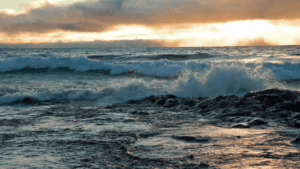
In our last Line 5 myth-busting blog, we exposed the ways Enbridge is attempting to circumvent tribal rights and violate the tribal sovereignty of the Bad River Band of the Lake Superior Chippewas in Wisconsin. It should come as no shock that the story doesn’t end there. Enbridge is perpetuating the same colonial violence when it comes to Line 5 and tribal rights across Michigan.
Enbridge continues to spin a narrative that it can be trusted as a fossil fuel megacorporation to act in the best interest of the Great Lakes. Despite its claims of respecting Indigenous rights and sovereignty, its actions tell a different story. Let’s break down some of the major myths that Enbridge’s PR machine peddles about Line 5, the Great Lakes, and tribal rights across Michigan.
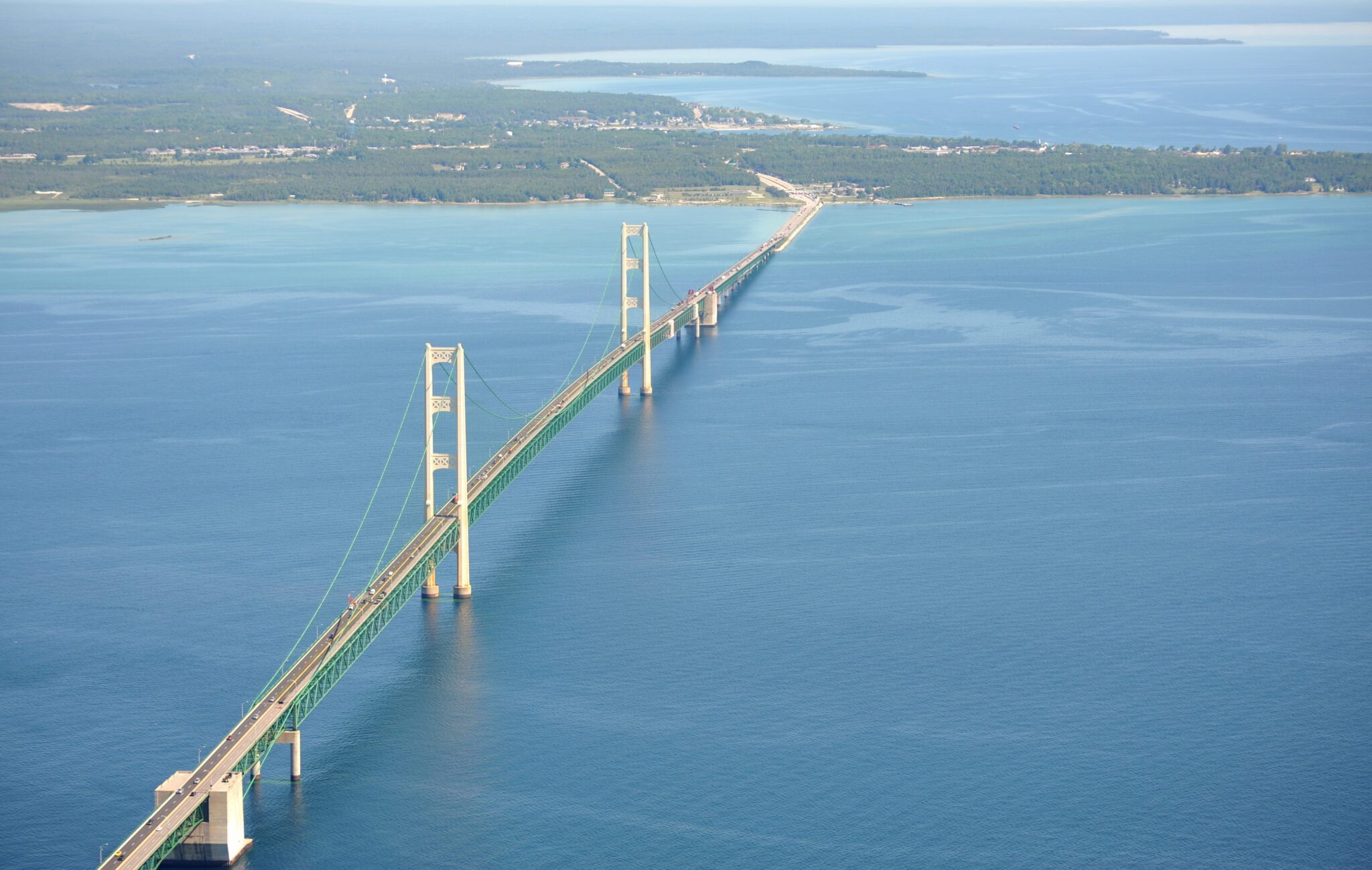
Myth: Enbridge has the ability to prevent a devastating rupture into the Straits of Mackinac.
Reality: In a best-case scenario, in the event of a Line 5 rupture into the Straits of Mackinac, it would take Enbridge about 13.5 minutes to shut off the pipeline. And in that time, over 1 million litres of oil could gush into the Great Lakes, engulfing up to 1100 km of shoreline across the Straits, Lake Michigan, and Lake Huron with dirty tar sands oil.
It’s worth recalling that in 2010, it actually took Enbridge 17 hours to stop oil spewing from one of its pipelines into the Kalamazoo River, resulting in one of the largest inland oil spills in U.S. history.
Significant spills have already occurred along the Line 5 route across Michigan.
Myth: The ongoing operation of Line 5 does not violate Indigenous rights of the Tribes across Michigan.
The inherent rights of Indigenous Nations mean the authority given to the people by the Great Spirit for self-determination. These rights are subject to responsibilities placed on the people by the Great Spirit, to care for the land and water and share it with the plants and animals.
During colonization in the 1800s, Anishinaabeg Tribal Nations across Michigan signed treaties in 1836, 1837, 1842, and 1854 with the United States government. These treaties enshrine the Tribes’ rights to hunt, fish, and gather in their traditional territories. Line 5 directly threatens the Anishinaabeg peoples’ ability to exercise these rights within the ecosystems that sustain them.
President (Chief) Whitney Gravelle of the Straits of Mackinac (Bay Mills Indian Community) expressed, “It’s more than just our food and water that’s at stake. It’s our connectedness to the natural world, our cultural identity, and deep sense of community that this landscape keeps alive. This is not just a tribal fight; we are fighting on behalf of all who value the Great Lakes and our environment”.
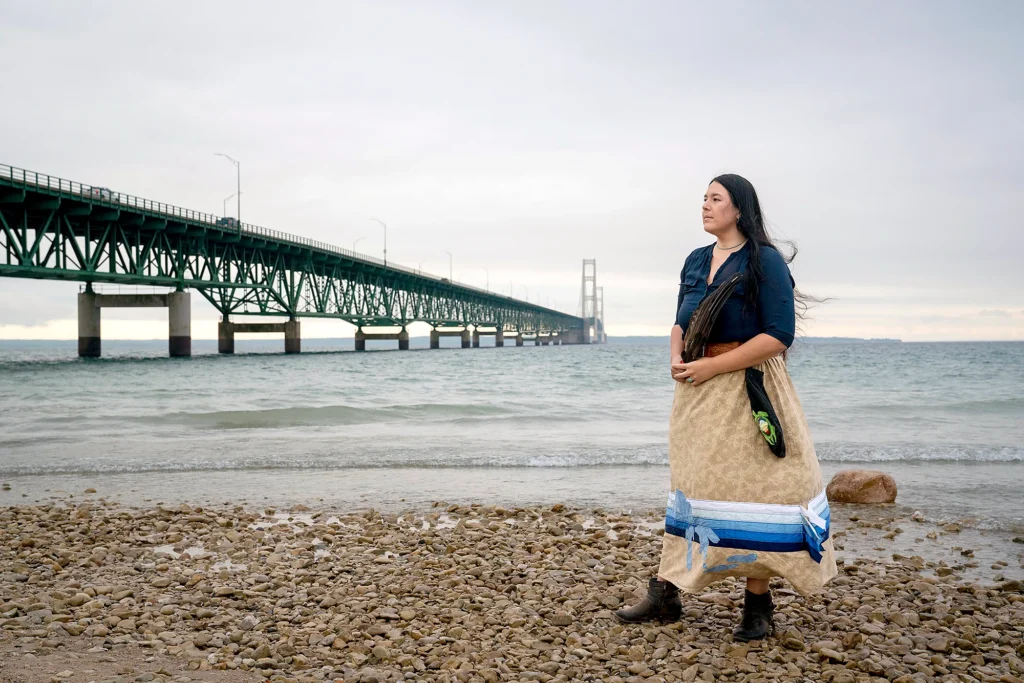
Myth: Enbridge and Canada are respecting Indigenous rights and working harmoniously with the Anishinaabeg Tribes within Michigan regarding the ongoing operation of Line 5.
Reality: Both Enbridge and Canada are actively working to circumvent the inherent and treaty rights of the Anishinaabeg Tribes across Michigan.
Enbridge is currently in court, fighting Line 5 shutdown orders from both the Michigan Governor and the Attorney General. These are orders that would uphold tribal rights, honour the treaties, and protect the Great Lakes for all communities.
Meanwhile, Canada has invoked a little-known and previously unused 1977 Canada-U.S. pipeline treaty to block Michigan’s shutdown order. However, the treaties made between the U.S. and Tribal Nations came before the treaty between the U.S. and Canada. Furthermore, when the pipeline treaty was created and signed into colonial law, the Indigenous Nations of the Great Lakes were entirely left out. On top of this, none of the Tribes within Michigan were consulted in the 1950s about the construction of the Line 5 pipeline.
Today, all 12 federally recognized Tribal Nations in Michigan have passed resolutions calling for the closure of Line 5. Bay Mills Indian Community has also banished Enbridge from its tribal lands at the Straits of Mackinac under tribal law — a move not taken lightly by the Tribe. Despite this, Enbridge refuses to comply, and the Canadian federal government is working alongside the fossil fuel giant, prioritizing industry interests over Indigenous rights.
Myth: Building a tunnel on the lakebed (the first of its kind in the world) through the Straits of Mackinac, is the best way to address the Anishinaabeg Tribes’ concerns about a Line 5 rupture devastating the Great Lakes.
Reality: No Michigan Anishinaabeg Tribal Nation supports the construction of this tunnel.
Bay Mills Indian Community is in court fighting the tunnel and stresses that constructing an underwater tunnel in the Straits of Mackinac poses an unacceptable risk to Indigenous communities, fish, sacred burial sites, and medicinal plants. “The Straits of Mackinac are a precious and culturally sacred part of our ecosystem that should not be jeopardized in the name of corporate greed,” said President (Chief) Whitney Gravelle.
Read more about why the tunnel is a dangerous plan and false solution.
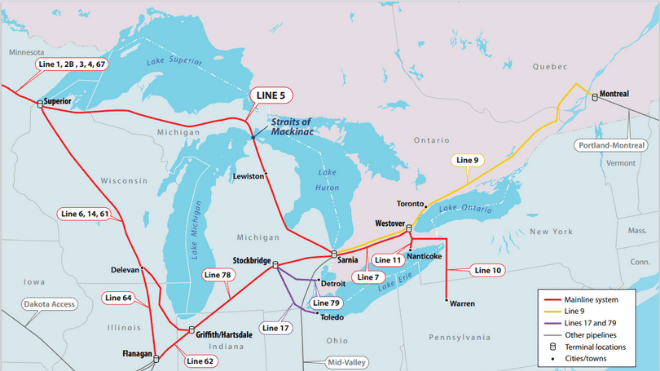
Myth: Enbridge can be trusted to act in the best interest of the Great Lakes, the world’s largest surface freshwater system.
Reality: Enbridge is the owner of the world’s largest crude oil pipeline network and it is in the business of moving fossil fuels.
Amidst global freshwater and climate crises, Enbridge is motivated by the profits and longevity of the fossil fuel industry. The company has a horrible track record when it comes to oil spills and makes a habit of gaslighting Indigenous Nations by downplaying the risks posed by Line 5.
Indigenous Nations of the Great Lakes are the true stewards of these water bodies and are motivated to ensure the health of the Great Lakes for present and future generations. They have been living in harmonious relations with these great freshwater lakes for at least 13,000 years.
Myth: Canada is committed to working with Indigenous peoples to build relationships based on respect, partnership, and affirmation and recognition of sovereignty and inherent rights.
Reality: Canada is continuing a legacy of harmful settler colonialism in the name of protecting the fossil fuel industry, and working to circumvent Tribal rights across Michigan.
The use of the 1977 Canada-U.S. pipeline treaty to enable Enbridge to keep Line 5 open is another glaring example of how Canada continues to oppress the Indigenous Nations of Turtle Island (North America) and violate the inherent rights of Indigenous peoples. This is environmental racism and colonial violence.
Since the establishment of the colonial Canadian state and the fossil fuel industry, there has been ongoing direct and systemic violence towards Indigenous Nations and peoples. They have been violently displaced from their lands and subject to an ongoing genocide to make way for extractive industries. Pipelines are one of the many ways in which Canada has harmed and forcefully displaced Indigenous Nations from their traditional lands and watersheds.
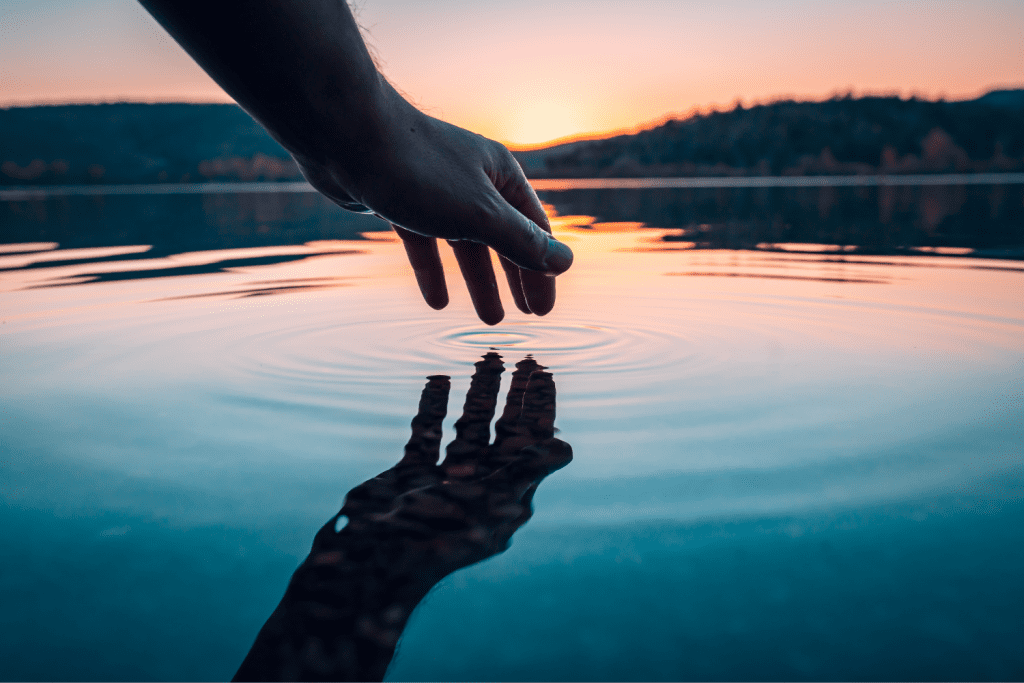
Indigenous Nations’ inherent water rights must be upheld.
This pipeline poses an existential threat to the Anishinaabeg and all the Indigenous Nations of the Great Lakes, who depend on these waters to sustain their ways of life, culture, and being. Line 5 threatens their ability to pass down knowledge systems and teachings that are thousands of years old. It is through these teachings and ways of being that the Indigenous Nations of the Great Lakes have lived in harmony and ongoing relation with the natural world for countless generations.
You cannot separate Indigenous peoples and Nations from the lands, waters, air, skies, and ecosystems that they have been a part of since time immemorial. Indigenous Nations of the Great Lakes are a part of the Great Lakes, and the Great Lakes are a part of them.
The Anishinaabeg Nations across Wisconsin, Michigan, and Ontario are united in their fight for the shutdown of Line 5.. Canada has a duty to not just get out of their way, by revoking its use of the 1977 pipeline treaty, but to also to work with the United States and Indigenous Nations to support the closure of Line 5.
Key Takeaways
- The ongoing operation of the Line 5 pipeline threatens Lake Michigan, Lake Huron, and the Straits of Mackinac. The pipeline has already leaked numerous times and will leak again.
- Line 5 threatens the inherent and treaty rights of the Anishinaabeg Tribes across Michigan. The treaties enshrine the Tribes’ rights to hunt, fish, and gather in their traditional territories. Line 5 directly jeopardizes the Anishinaabeg people’s ability to exercise these rights and the ecosystems that sustain them.
- Enbridge and Canada are actively trying to circumvent the inherent and treaty rights of the Anishinaabeg Tribes across Michigan. Canada’s use of the 1977 Canada-U.S. pipeline treaty — a treaty which did not consider or include Indigenous rights and that is preceded by the treaties made between the Tribal Nations and the U.S. — is a glaring example of Canada’s disregard for Indigenous rights.
- Not one Anishinaabeg Nation supports Enbridge’s proposal to build a tunnel on the lakebed of the Straits of Mackinac.
On a personal note:
As a Métis (of manitou sakhahigan, “spirit of the lake”) and British-Canadian water protector and member of the Great Lakes ecosystem, I acknowledge the sacred covenant with the Great Lakes that we hold and our duty to protect these freshwater bodies in alignment with the Seventh Generation Principle. I stand united with Anishinaabeg kin who are calling for the permanent closure of Line 5. One of the most essential elements that creation and life are dependent upon, is water, nibi in Anishinaabemowin. The Great Lakes hold 84 per cent of Turtle Island’s surface freshwater.
The first treaties that we hold as Indigenous peoples are with the natural world. The first treaties with the natural world prevail over any treaty made since colonization. These treaties will always be the guiding principles of living in harmony with the lands, the waters, the trees and plants, the four-legged relatives, the insects, the soil, the air, and everything that holds life and gives us life. These are the treaties that we all must honour and uphold to the highest regard. And it is in the name of protecting the great waters of the Great Lakes and of the Great Turtle Island, that we must shut down Line 5 for good.
The post Busting Enbridge’s Line 5 Myths – Part 4: Indigenous sovereignty, Tribal rights, and consent — Bay Mills Indian Community and Anishinaabeg Tribes across Michigan appeared first on Environmental Defence.
This post was originally published on Environmental Defence.
